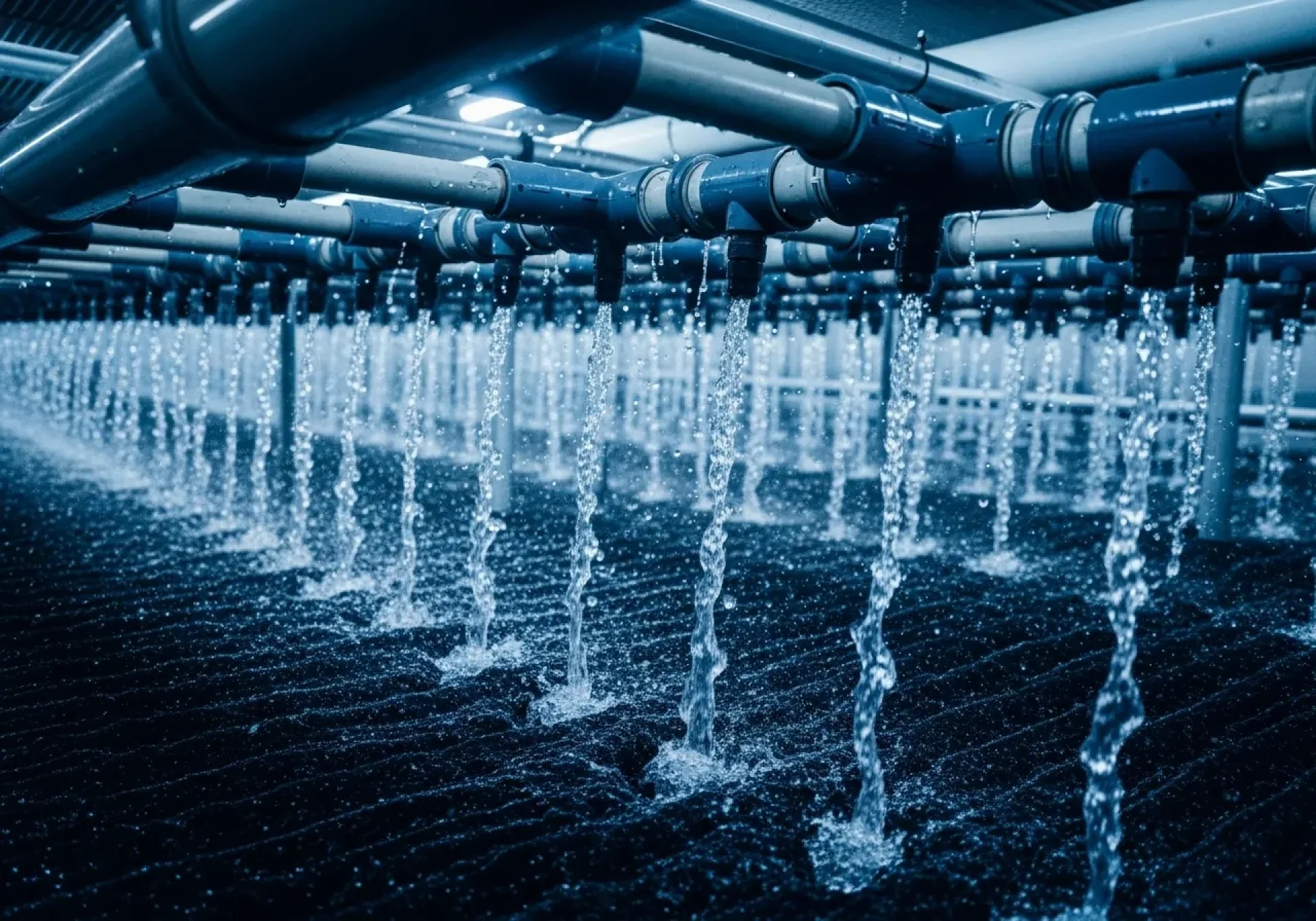Distribution Line The Heart of Cooling Tower Water Systems

In this context, the Distribution Line for a Cooling Tower does not refer to electrical wiring, but rather the "Water Distribution Piping Network." It functions to receive hot water from the heat source via the Main Header, directing it to Lateral/Branch pipes, and finally through Nozzles to distribute the water onto the Fill Media.
If this system is properly designed and maintained, water will be distributed uniformly across the entire surface area (Uniform Coverage), maximizing heat exchange efficiency with the air. However, neglecting it can lead to significant issues such as "Dry Spots," scaling, and outlet water temperatures that fail to meet cooling requirements.
Key Components for Uniform and Efficient Cooling
The core of a Distribution Line is its ability to control Flow and Pressure appropriately at every point to ensure water breaks down into fine droplets or a thin film effectively. Key components include:
Essential Items in a Water Distribution System
- Main Header: Acts as the main artery, receiving hot water pumped from machinery or condensers.
- Distribution Header / Branch Arms: Pipes branching off the main header to distribute water across the cooling tower's cross-section. These are often made from corrosion-resistant materials like PVC, PP, or FRP.
- Spray Nozzles: The hero of the system, responsible for converting the water stream into fine droplets to maximize the surface area in contact with the air.
- Flow Control Valves: Used to balance the water volume in each branch pipe, preventing uneven water flow distribution.
- Grommets & Adapters: Rubber seals and fittings used to secure nozzles and prevent leaks at connection points.
Design Consideration: Avoiding "Dry Spots"
The heart of a reliable cooling system is ensuring Maximum Contact between water and air. Distribution Line design must consider:
- Overlapping Pattern: Positioning nozzles so that their spray radii overlap perfectly to avoid gaps (Dry Spots). Gaps allow air to bypass the water (Air Bypass), causing thermal performance to plummet.
- Operating Pressure: Water pressure in the pipes must match nozzle specifications. Low pressure results in a solid stream rather than a spray, while excessive pressure can cause water to atomize too finely and be blown away (Drift Loss).
- System Type (Gravity vs. Pressurized):
- Crossflow Tower: Typically uses a Gravity system (Hot Water Basin), letting water flow through orifices by gravity.
- Counterflow Tower: Typically uses a Pressurized system (Spray Pipes) using pump pressure to force water through spray nozzles.
Water Quality and Flow: Factors to Consider from the Design Stage
Cooling Towers often face issues with sediment or scale, which are arch-enemies of the Distribution Line, especially the nozzles. Parameters to consider when selecting a Distribution Line include:
- Orifice Size: If water quality is poor, choose nozzles with larger orifices or non-clogging designs to reduce blockage risks.
- Material: Must be resistant to water treatment chemicals and hot water temperatures (e.g., UPVC or Fiberglass) without becoming brittle.
- Piping Layout: Should be designed for easy cleaning (Serviceability) or include Flush points at pipe ends to clear sediment.
Preventive Maintenance: Keeping the Flow Smooth
Classic problems with Distribution Lines are "Clogged Nozzles" and "Broken Pipes." PM (Preventive Maintenance) should focus on inspecting water flow conditions.
PM Checklist for Distribution Lines
- Visual Inspection: Check the water spray pattern while operating. Ensure it is uniform and check for nozzles that are not spraying or are streaming instead of spraying.
- Cleaning Nozzles: Remove nozzles for cleaning to remove scale and debris periodically (e.g., every 3-6 months).
- Pipe Integrity Check: Inspect PVC/FRP pipes for cracks, sagging, or loose supports, as vibration can cause pipe failure.
- Flushing: Open the End Cap valves to flush out sediment accumulating in the main and branch pipes.
Conclusion: Uniform Distribution = Fast Cooling = Energy Savings
A properly designed and maintained Distribution Line ensures the Cooling Tower operates at full Thermal Performance, reducing water temperature to target levels. This reduces the load on main machinery (Chillers/Machines) and, crucially, extends the lifespan of the Fill Media by preventing damage caused by uneven water load.


